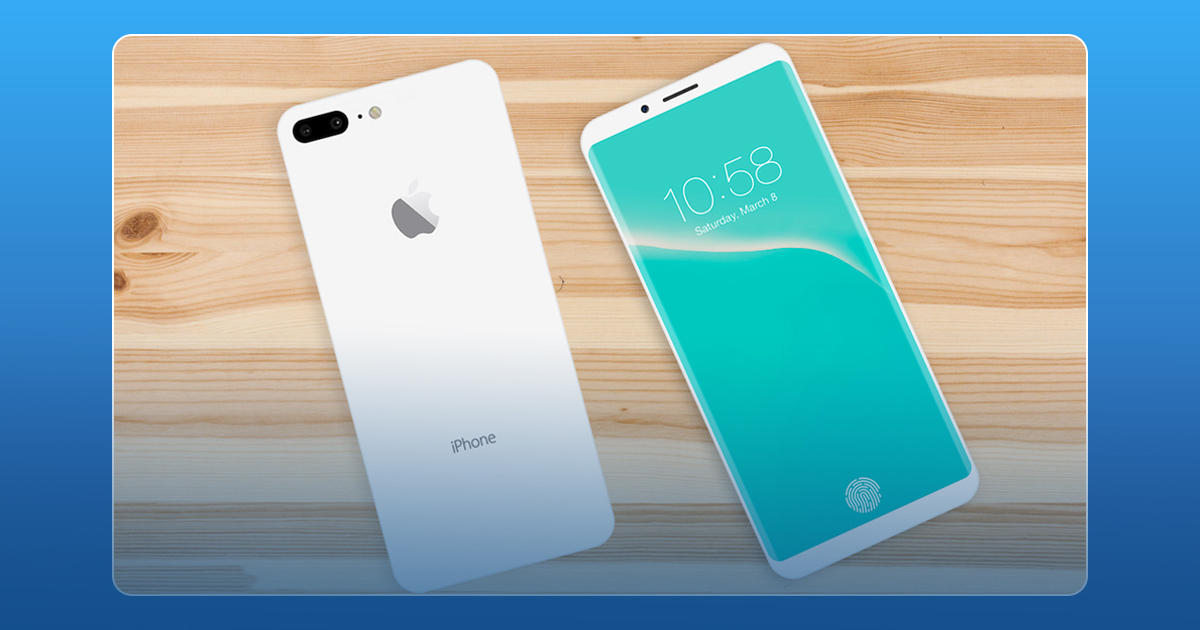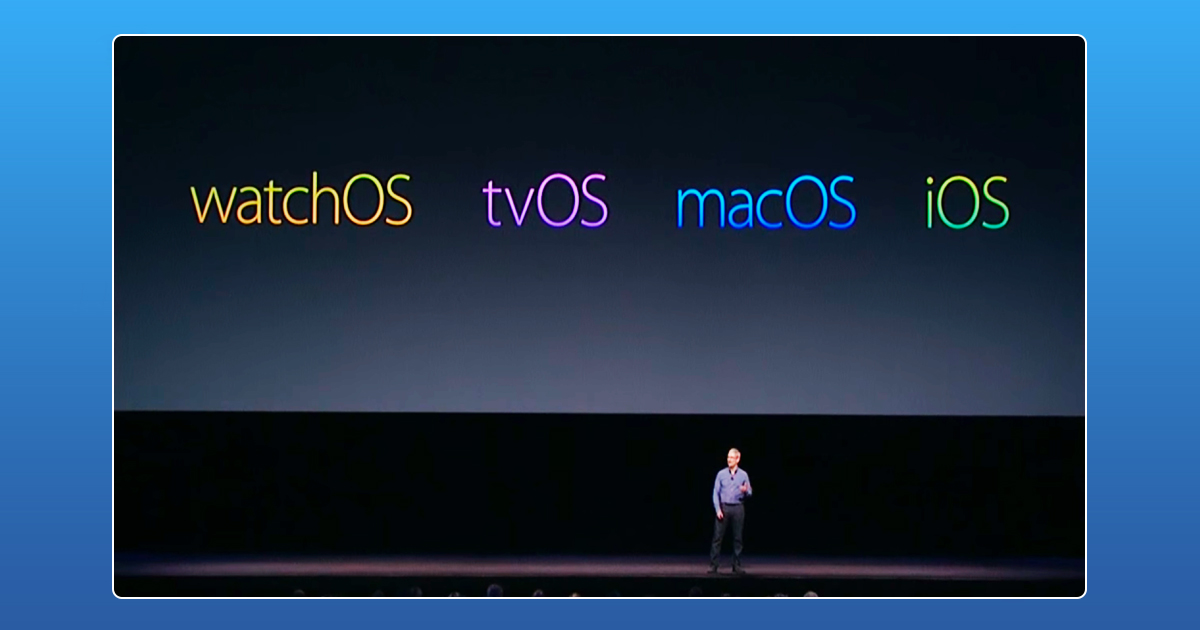Latest News
7 Exciting Features The iPhone Might Get This Year

Apple Inc. recently announced the dates of its biggest software event of the year, WWDC 2017.
As before, this year’s event will again see the tech giant unveiling the newest generation of its operating system, iOS 11, which powers the company’s iPhones and iPads. It will be released along with the newest edition of iPhones as well as for the previous generation iPhones(compatible devices).
Here are seven new and exciting features the Apple iPhone is expected to get this September.
1. Transcribe voice mail to text: Though this feature is at present available in iOS 10, it’s limited to the beta versions alone. Enables users to transcribe all their voicemails to text if necessary
2. Revamped Siri: It speculated that the tech giant is planning an array of new changes for its personalized digital assistant. They are attempting to make it work in offline mode. Another exciting feature is making it work cross platform, meaning execution of a command on the iPhone when given from an iPad. They are rumored to be even working on the voice, trying to make it sound less robotic and more natural.
3. Augmented Reality: Supposedly one of the biggest features of the new batch of iPhones, the company’s Apple analyst KGI Securities Ming-Chi Kuo said that Apple’s upcoming iPhone, dubbed iPhone 8, will support 3D sensing, AR, and biometric authentication. He spoke about a pair of sensors on the FaceTime camera will help iPhone 8 provide features ranging from 3D sensing and modeling to advanced biometric authentication.
4. Drop Support for 32-bit: Apple is reportedly all set to stop support for 32-bit with its new iOS. This will result in the obsoletion of around 200,000 apps on the app store as they all depend on the 32bit OS.
5. Dark Mode: The new OS might finally have Dark Mode for its users on iPhones and iPads.
6. Group FaceTime: This is one of the biggest features that’s missing on the iPhone’s chat app. We might finally get to use this if they decide to incorporate it into this year’s release, as Skype already has this feature in their app.
7. Improved Maps: In an attempt to catch up to their big time rival Google Maps, Apple is thinking of deploying a fleet of drones to enhance is mapping data and increase accuracy and effectiveness of its native navigation application. The company is assembling a team of data collection experts and robotics, responsible for mapping location and map data using drones, instead of the regular minivans with cameras and other sensors.
This year WWDC should be a game changer in the rivalry between Apple, Google, and Samsung.
Latest News
Zerodha Reports 23% Profit Decline in FY25 as Revenues Miss Target

Zerodha experienced a challenging FY25, as its revenue fell 11.5% to ₹8,847 crore and net profit dropped 22.9% to ₹4,237 crore. This decline reflects tougher regulatory conditions, lower trading volumes, and increased operational costs in the brokerage market, all of which impacted core earning segments for the company.
Despite these headwinds, Zerodha improved its operating margin to 63.78% and built up significant cash reserves, reporting ₹22,679 crore in bank balances. Salary expenses and director remuneration increased, but disciplined cost controls helped the company maintain profitability and a debt-free balance sheet. The drop in active clients and increased compliance costs further contributed to the profit contraction.
Looking ahead, Zerodha’s resilience is supported by its robust cash position and operational efficiency. Maintaining steady margins, diversifying product offerings, and investing in technology positions the company to withstand future regulatory fluctuations and changing market sentiment reinforcing its status as one of India’s leading brokerage firms.
Latest News
Zoho Pay Debuts as India’s New UPI Challenger, Taking on PhonePe, Paytm, and Google Pay

Zoho Corporation has expanded its fintech portfolio with the launch of Zoho Pay, a UPI-based payments app built to challenge India’s top digital payment giants such as PhonePe, Paytm, and Google Pay. The new app supports peer-to-peer transfers, bill payments, QR-based transactions, and merchant settlements in a streamlined interface. Available as both a standalone app and an integrated feature inside Zoho’s privacy-driven messenger Arattai, Zoho Pay enables users to handle chats and payments in one platform, emphasizing data privacy and Made-in-India innovation.
Through seamless integration with Arattai, Zoho Pay allows users to send or request payments, split expenses, and conduct UPI-based transactions directly in their chat windows. Users can link bank accounts, scan dynamic QR codes, and receive audio confirmations of payments, ensuring speed and security. This design mirrors the simplicity of India’s leading UPI apps but is powered by Zoho’s non-advertising, privacy-first model. The integration aligns with Zoho’s mission to build a self-reliant digital ecosystem, where messaging and money management coexist securely.
In the competitive digital payments market, Zoho Pay differentiates itself through its tight business software integration with apps like Zoho Books, Zoho Payroll, and Zoho Commerce, offering small businesses unified access to payments, billing, and accounting. The company is also expanding its reach with POS devices for merchants featuring UPI QR, card payments, and instant reconciliation tools. With founder Sridhar Vembu’s vision of a ‘Chat + Pay’ ecosystem, Zoho Pay reflects a bold step toward redefining India’s fintech scene with a secure, ad-free, and locally developed alternative to global payment platforms.
Latest News
Meta Expands AI-Powered Reels Translation to Hindi and Portuguese, Enhancing Global Creator Reach

Meta has expanded its AI-powered translation feature for Reels to include Hindi and Portuguese, joining English and Spanish in empowering creators to reach a broader global audience on Instagram and Facebook. Originally launched in August 2025 with support for English and Spanish, this update now allows creators to seamlessly translate and dub their short videos, breaking language barriers across some of the largest Reels markets worldwide. The AI technology mimics the creator’s voice tone and even offers lip-syncing to ensure the translated videos feel natural and engaging for viewers.
This enhancement is especially significant for India, the largest market for Facebook and Instagram, where over 600 million people speak Hindi. Content creators who are not fluent in Hindi can now easily access this vast audience, increasing their reach and engagement across diverse linguistic groups. To maintain transparency, all translated Reels are clearly labeled with “Translated with Meta AI,” and viewers can choose to switch translations on or off based on their preference.
In addition to voice dubbing, Meta is developing features to translate captions and text stickers on Reels, making content more accessible even without sound. These AI translation tools are available free for eligible public Instagram accounts and Facebook creator profiles with over 1,000 followers. This innovation reinforces Meta’s commitment to fostering cross-cultural content sharing and enhancing creators’ ability to connect with audiences around the world through short-form videos.











谷歌站群
November 7, 2025 at 5:42 am
专业构建与管理谷歌站群网络,助力品牌实现全域流量的强势增长。谷歌站群
Kuwin
November 8, 2025 at 12:45 am
kuwin sở hữu kho game đa dạng từ slot đến trò chơi bài đổi thưởng, mang đến cho bạn những giây phút giải trí tuyệt vời.
MM88
November 9, 2025 at 9:28 pm
Khám phá thế giới giải trí trực tuyến đỉnh cao tại MM88, nơi mang đến những trải nghiệm cá cược thể thao và casino sống động.
站群程序
November 13, 2025 at 3:15 pm
采用高效谷歌站群策略,快速提升网站在搜索引擎中的可见性与权重。谷歌站群
GO88
November 13, 2025 at 5:38 pm
Tham gia cộng đồng game thủ tại Go88 để trải nghiệm các trò chơi bài, poker phổ biến nhất hiện nay.
MM88
November 13, 2025 at 7:13 pm
Với giao diện mượt mà và ưu đãi hấp dẫn, MM88 là lựa chọn lý tưởng cho các tín đồ giải trí trực tuyến.
J88
November 25, 2025 at 12:41 pm
Đến với J88, bạn sẽ được trải nghiệm dịch vụ cá cược chuyên nghiệp cùng hàng ngàn sự kiện khuyến mãi độc quyền.